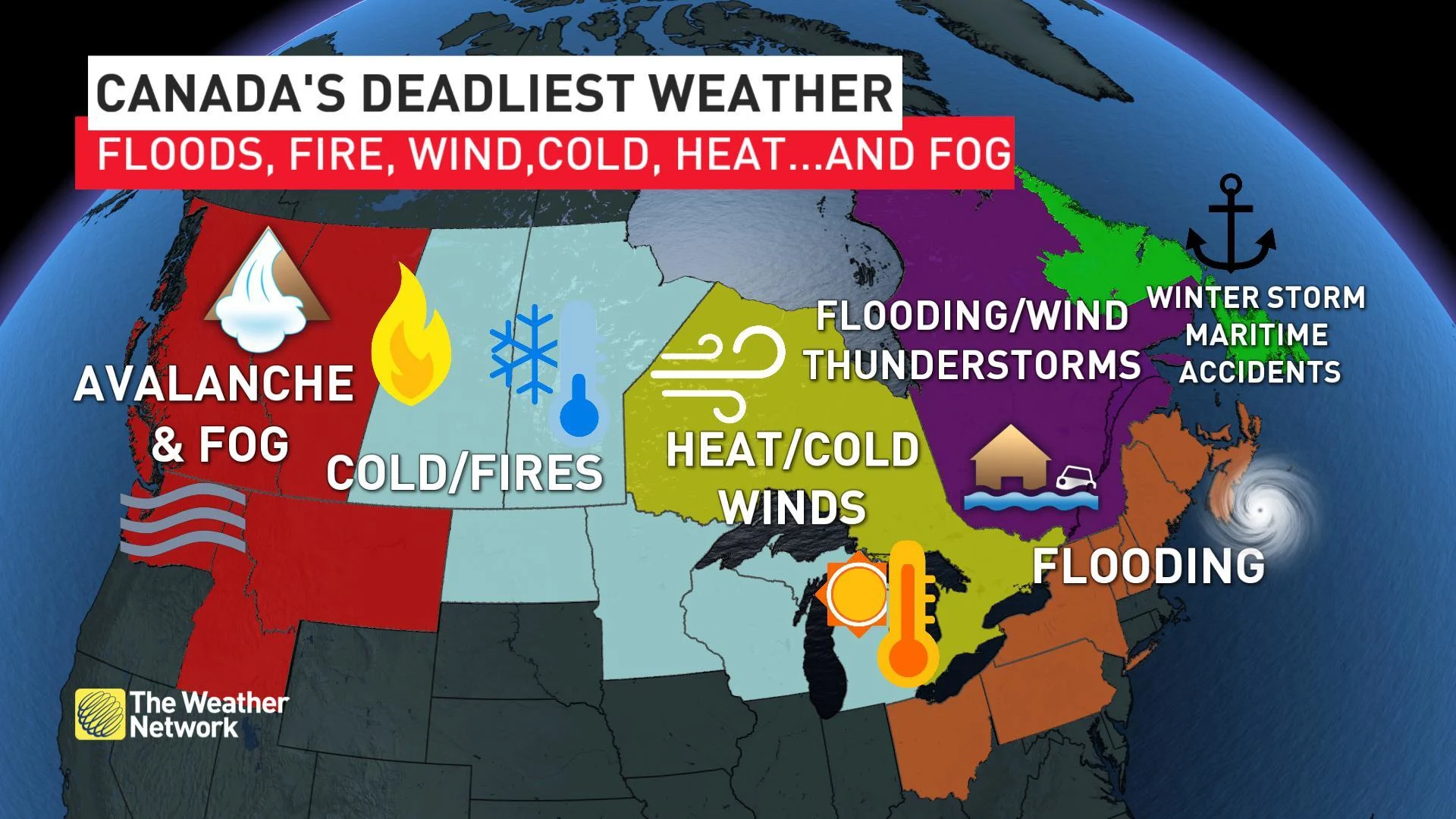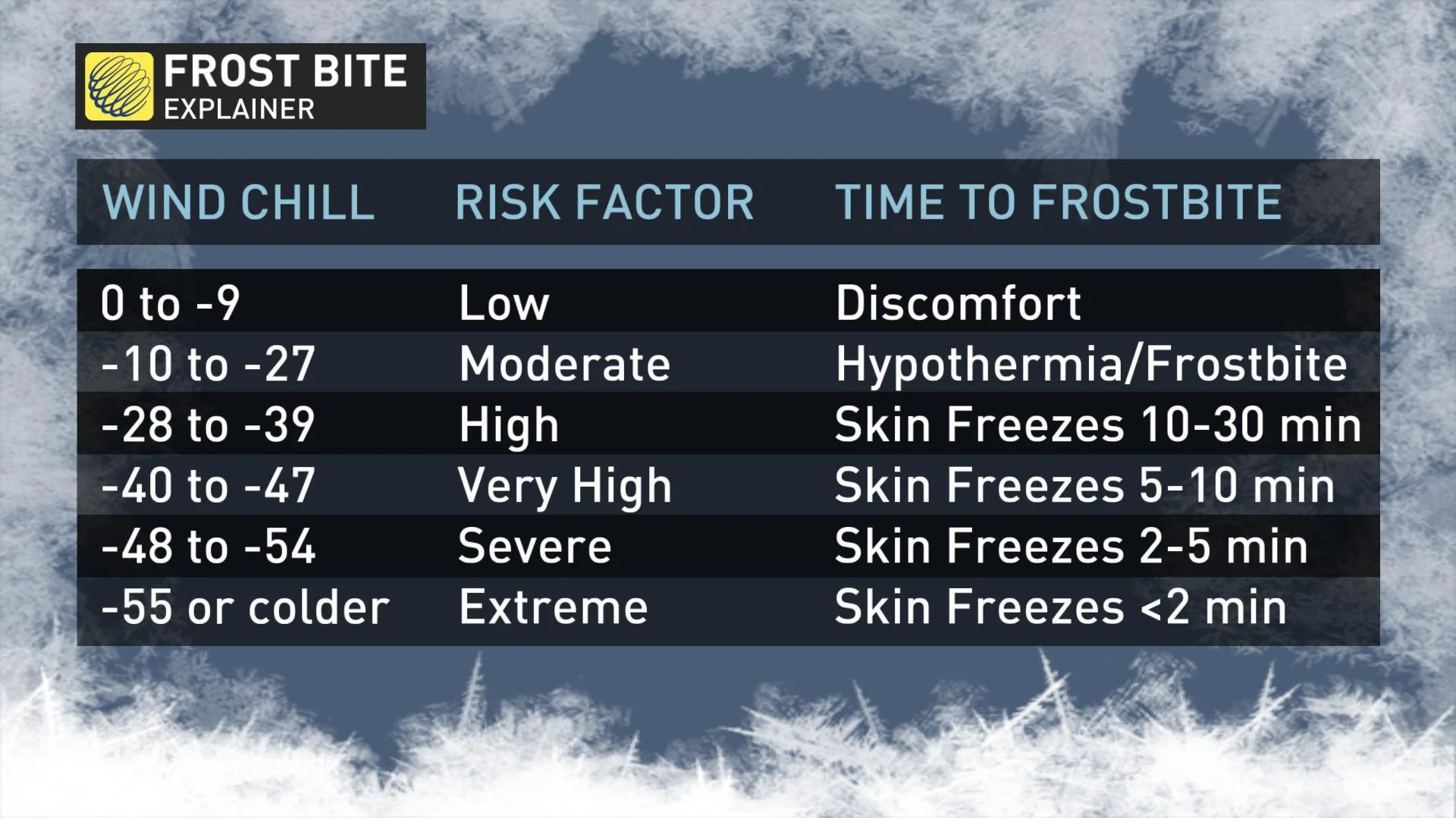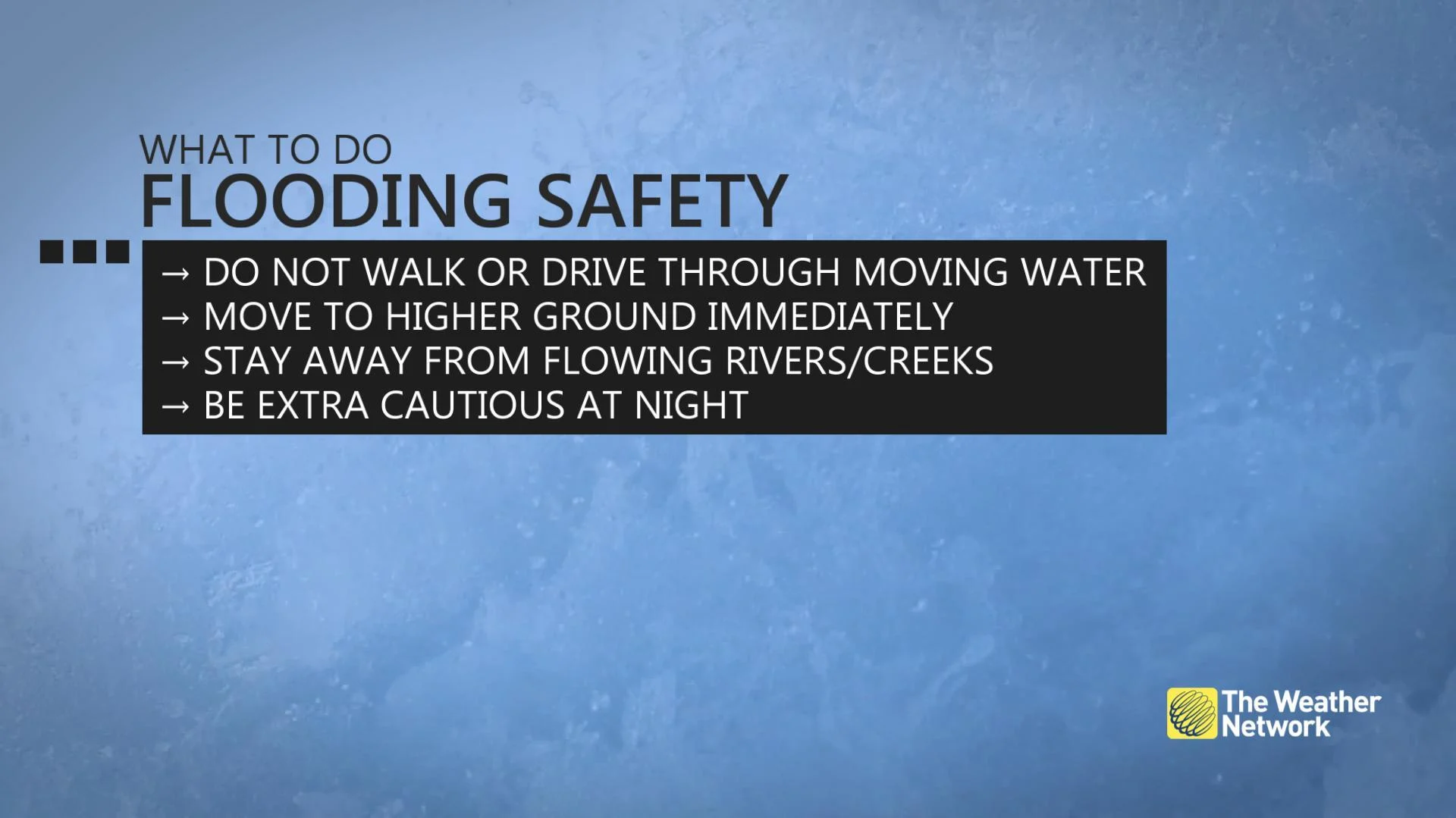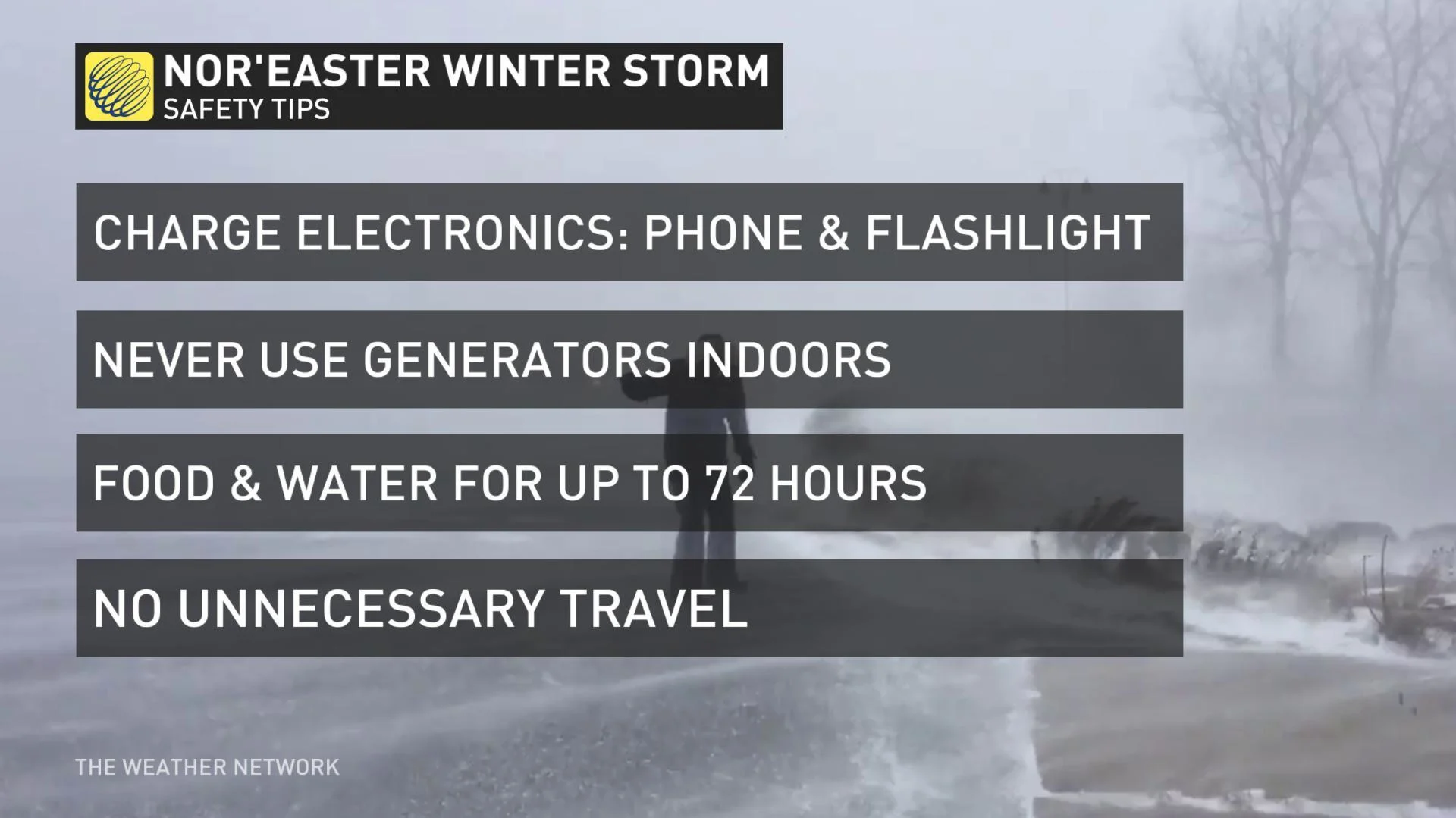
Canada's deadliest kinds of weather might surprise you
Our country's diverse weather is a point of pride for many Canadians. Whether you worship the sun and heat or crave the snowy slopes, you can find what you're looking for here.
That variety isn't without its downsides, however, and dangerous weather conditions are a reality from coast to coast. What form that risk takes is as varied as the environment itself, however.
Using statistics from agencies like Public Safety Canada and extrapolating information from the U.S National Weather Service, we've come up with a look at what kinds of weather pose the biggest threat to Canadians, region by region.

B.C. AND ALBERTA -- AVALANCHES AND FOG
The significant threats here come courtesy of the terrain. As the most mountainous part of the country, it stands to reason that B.C. and Alberta see the most frequent avalanche threats. According to Avalanche Canada, avalanches leave an average of 11 people dead every year in Canada. Looking at the NWS map, you can also track the deadly impact of sliding snow all the way down the Rockies to Colorado and Utah.
Fog is a stealthier killer, and perhaps one of the most underestimated dangers to travel across the country. It often doesn't get the same attention as flashier weather events, like tornadoes and hurricanes, but near-zero visibility is treacherous for travel, both by air and car. When temperatures dip to the freezing mark, fog can have another deadly by-product: Black ice.
Map based on preliminary work with NWS office statistics
The topography of British Columbia combined with infusions of damp, Pacific air can make fog a particular problem there.
SASKATCHEWAN AND MANITOBA -- COLD AND WILDFIRES
Opposing forces take the field in the central and eastern Prairies, where cold exposure and wildfire dangers are the focus.
Wildfires are a fact of summer life for much of northern Saskatchewan and Manitoba. While they're not strictly a type of weather themselves, drought conditions and lightning strikes play a major role in the spread of warm-season fires on the Prairies. Fortunately, the largest fires to strike the region tend to be in less-inhabited areas. Even so, the Canadian Disaster Database, which has entries covering from 1900 to the present, shows nearly 60,000 people have been evacuated at times due to fires in the two provinces since the 1930s.
Cold exposure can be harder to avoid when high temperatures drop into the -20s and wind chill reads -40. Statistics show more than 80 people in Canada die each year from over-exposure to the cold.

A 2015 study found that over 27 years, heat-related causes were responsible for 0.5 per cent of deaths in Canada. Cold-related issues, on the other hand, claimed a total of 4.5 per cent.
ONTARIO AND QUEBEC -- TEMPERATURES, WIND, AND FLOODING
While cold-related deaths take the lead for Canada, heat stress in the humid summertime takes a toll on parts of the country, too. In 2018, a record-shattering heat wave over Canada Day weekend claimed 66 lives in Montreal alone as temperatures climbed to 35.5ºC and humidex values topped 40. The humidex reading in Ottawa on Canada day was a sweltering 47.

Summertime heat and humidity also help to fuel another sometimes-deadly weather phenomenon across the region -- thunderstorms. Though lightning and tornadoes may come to mind first, it's often the winds that are deadly with these storms, bringing down trees, branches and live electrical wires.
And, of course, those aren't the only storms that target the region. The jet stream often directs not just fall, winter, and spring storms up toward the Great Lakes and St. Lawrence River, but the remnants of tropical systems as well. Though that doesn't happen every year, when it does, southern Ontario and particularly southern Quebec can see tremendous boosts to their annual rainfall totals and -- in some cases -- dramatic flooding. The remnants of 1954's Hurricane Hazel took 81 lives in the Toronto area when the Humber River, Holland Marsh, and Etobicoke Creek flooded, leading to infrastructure and flood management changes that are still in place today.

Both provinces also tend to see seasonal flooding related to spring snowmelt, as well. The record clearly shows that flood events are among the most dangerous in the region.
ATLANTIC CANADA -- FLOODING AND NOR'EASTERS
The storm track that routinely swamps Ontario and Quebec with major storms generally ends its run across North America in Atlantic Canada, and that means the eastern-most parts of the continent are also often on the receiving end of heavy rain and snow. The region also finds itself even more directly in the crosshairs for tropical remnants, and the Maritimes -- especially New Brunswick -- suffer similar springtime flooding when the snow starts to melt.
Atlantic Canada gets a storm all their own, however, and it's one of the deadliest when it comes to the weather around Newfoundland. The infamous nor'easter -- a cold-season storm that sweeps up from the U.S. Northeast and brings lashing winds, heavy rain and snow, and treacherous ocean conditions to the Maritimes and Newfoundland

Public Safety Canada's disaster database shows nearly 700 fatalities since 1900 related to maritime accidents caused by bad weather, most of them during winter storms off the coast of Newfoundland. A single storm in January of 1942 claimed 203 lives when two U.S. navy ships wrecked on rocks near Placentia Bay after going off course during a blizzard.
Sources: Public Safety Canada | Avalanche Canada | Ottawa Public Health | CBC News |





